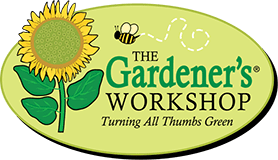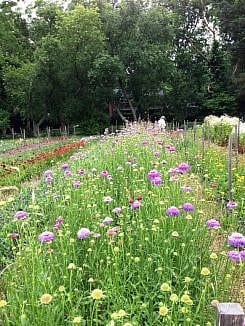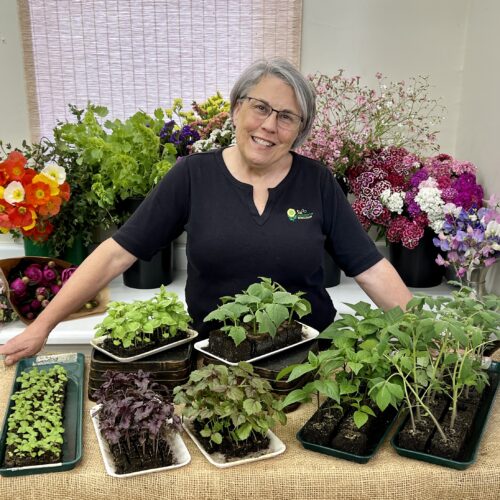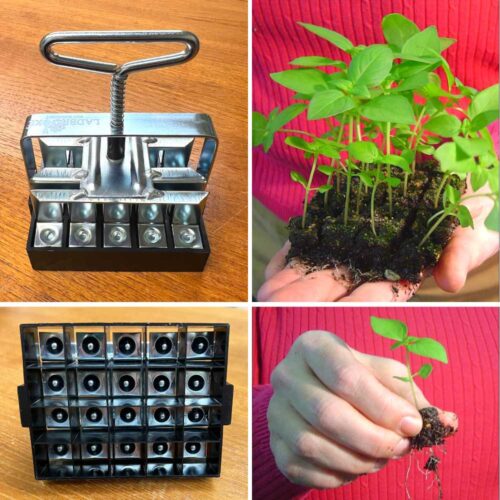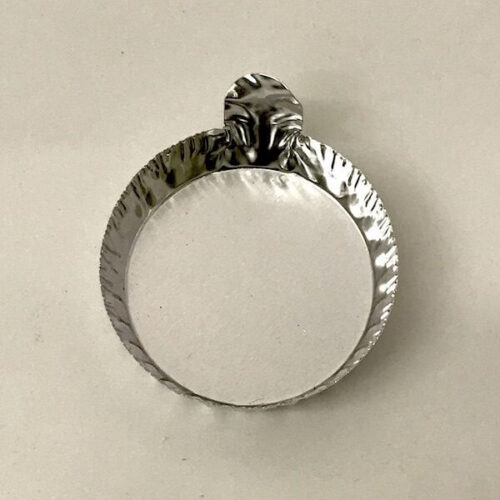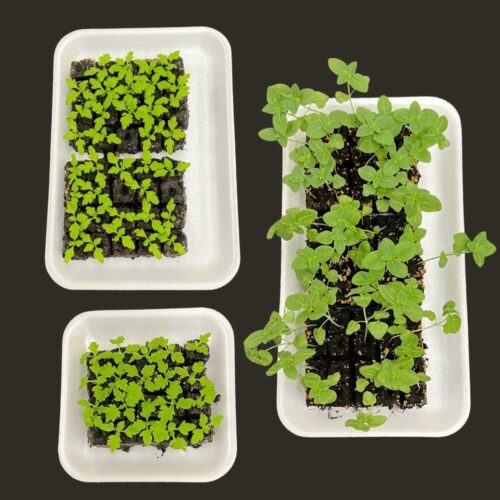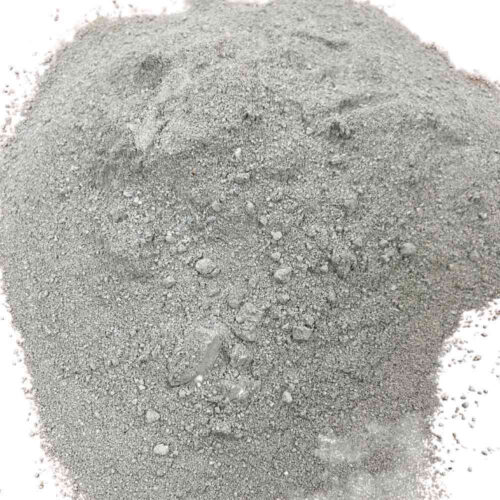Pollinators–Plant and they will come!
I didn’t set out to fill my farm with pollinators and other beneficial insects. You might say it has been a side effect of all-natural cut-flower farming.
As simple as it sounds, it’s true. Just plant flowers. Don’t use pesticides–organic or otherwise. Soon a wave of these guys will overrun your garden.
As my awareness of beneficial insects has grown, I find that it is getting easier to farm. It has become my second nature to consider and provide a place for them to live, eat, and raise a family year round. This practice is not only the right thing to do for the future of all, but it totally impacts my business bottom line for the good.
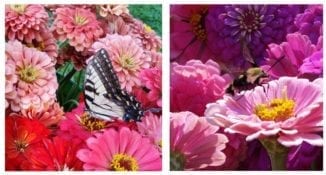
We have pollinators following our harvest trailer around the farm! Harvest buckets of zinnias with a swallowtail butterfly left and a hummingbird moth on right.
This little-known community of good bugs is as diverse a mix as the population of NYC. And don’t underestimate their entertainment value either. A fairly common comment directed at me on our farm: “Are we harvesting flowers today or are we taking photos of bugs?” There is a reason they make movies about bugs — they are fascinating!
How to attract them? Provide flowers from the first crack of spring and throughout the season until frost. It’s those early spring blooms that really kickstart our insect population. Bachelor buttons and calendula are two of the heavy hitters in our gardens. They bloom in spring when the nights are still chilly but the days are warm. Their foliage secretes nectar even before the flowers bloom, making them a great favorite of hungry bugs.
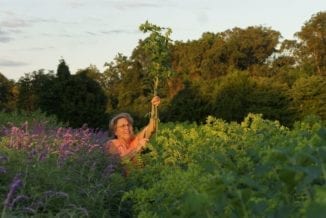
Fall blooming flowers will keep the garden full of pollinators until winter arrives. Left Salvia Leucantha, right Salvia Mexicana.
Pleasing the pollinators requires providing a continuous supply of flowers throughout the growing season. This fits perfectly with my flower farming because my customers want the same thing! Monthly succession planting fits the bill for us.
To reap the benefit of these guys as pollinators and pest control, you must resist the urge to treat a possible problem that may pop up in your garden. Be patient and do not be afraid of some pest damage. To keep your community of good guys home and fed, they have to have some bad bugs to eat, right? Give them time to do their job.
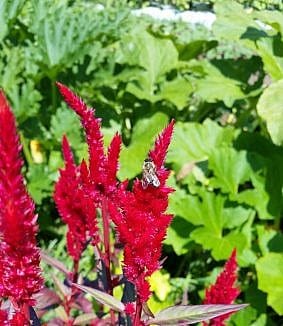
Planting flowers in the garden with your vegetables with ensure pollination. Celosia plume with a bumblebee.
It is my opinion that if you have a 10-row vegetable garden, you should also have 2 rows of flowers to support them. I won’t get on my wagon here about the vegetable gardens I visit. There are some that don’t have a flower in sight, while the gardener complains of a lack of bees for pollinating. It couldn’t be more simple: plant flowers and they will come.
Perhaps the most challenging blooming times are spring and fall–both can be full of abundance growing hardy annuals as featured in my book Cool Flowers. To learn how to supply your garden with a vast population of pollinators and other beneficial insects have a look at my Cool Flowers online book study.
The Field and Garden Blog is produced by Lisa Mason Ziegler, award-winning author of Vegetables Love Flowers and Cool Flowers, owner of The Gardener’s Workshop, Flower Farming School Online, and the publisher of Farmer-Florist School Online and Florist School Online. Watch Lisa’s Story and connect with Lisa on social media!
